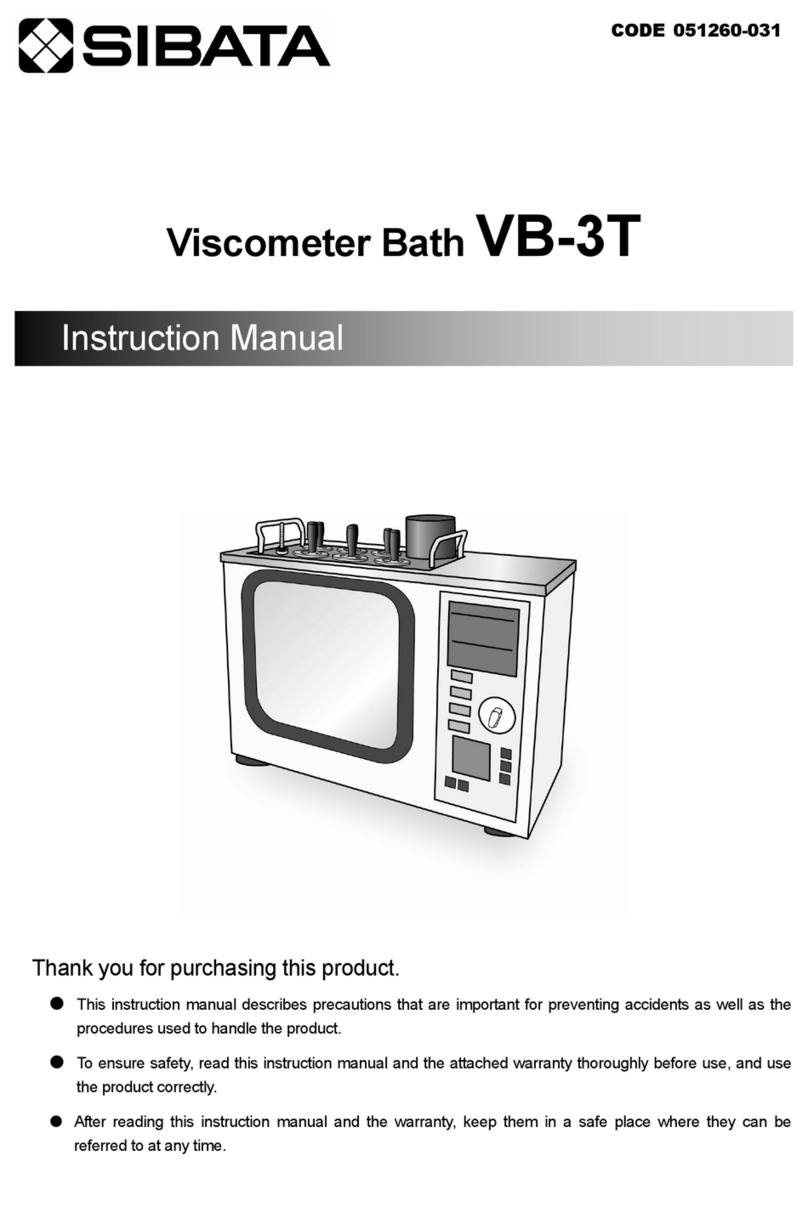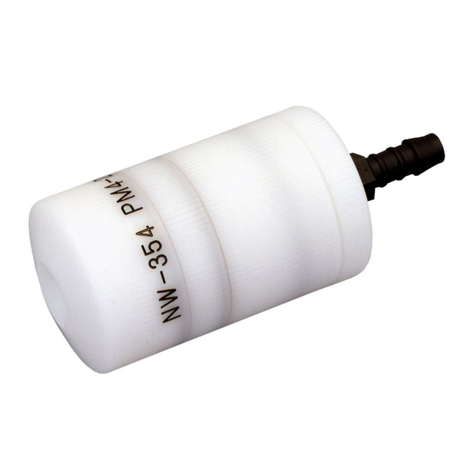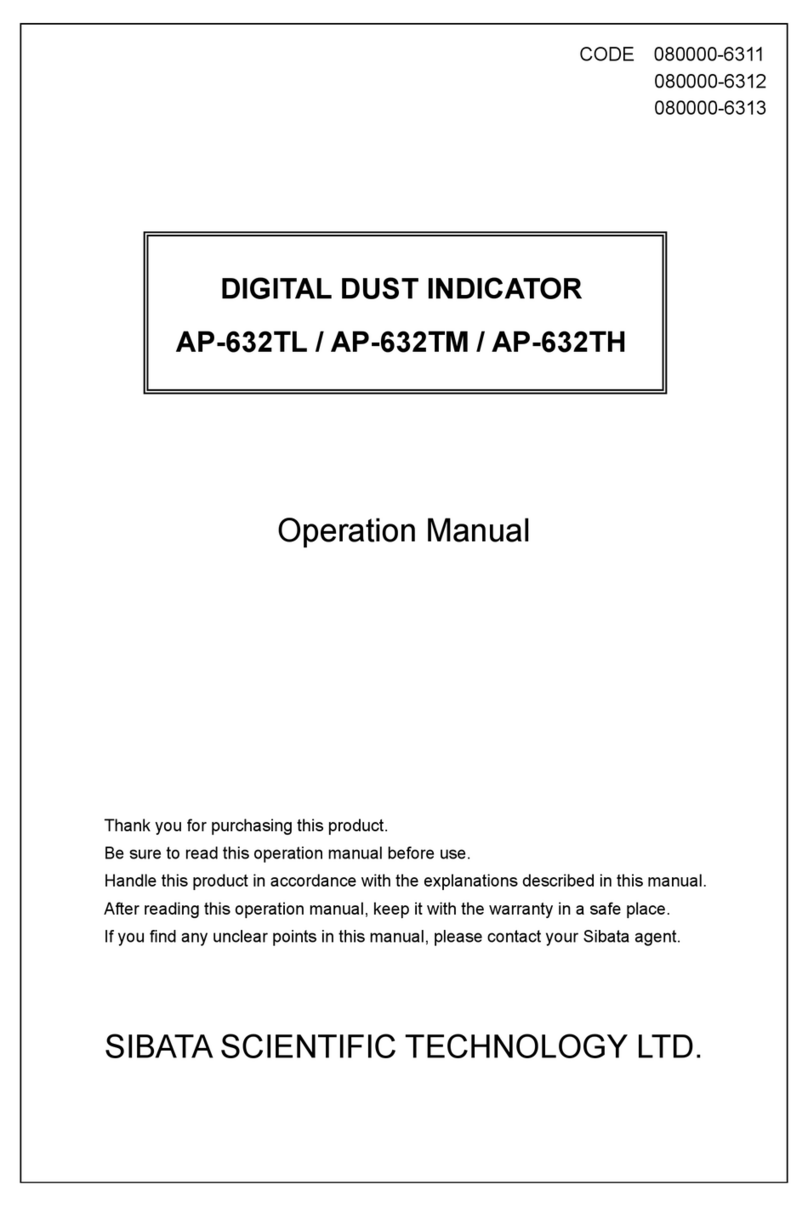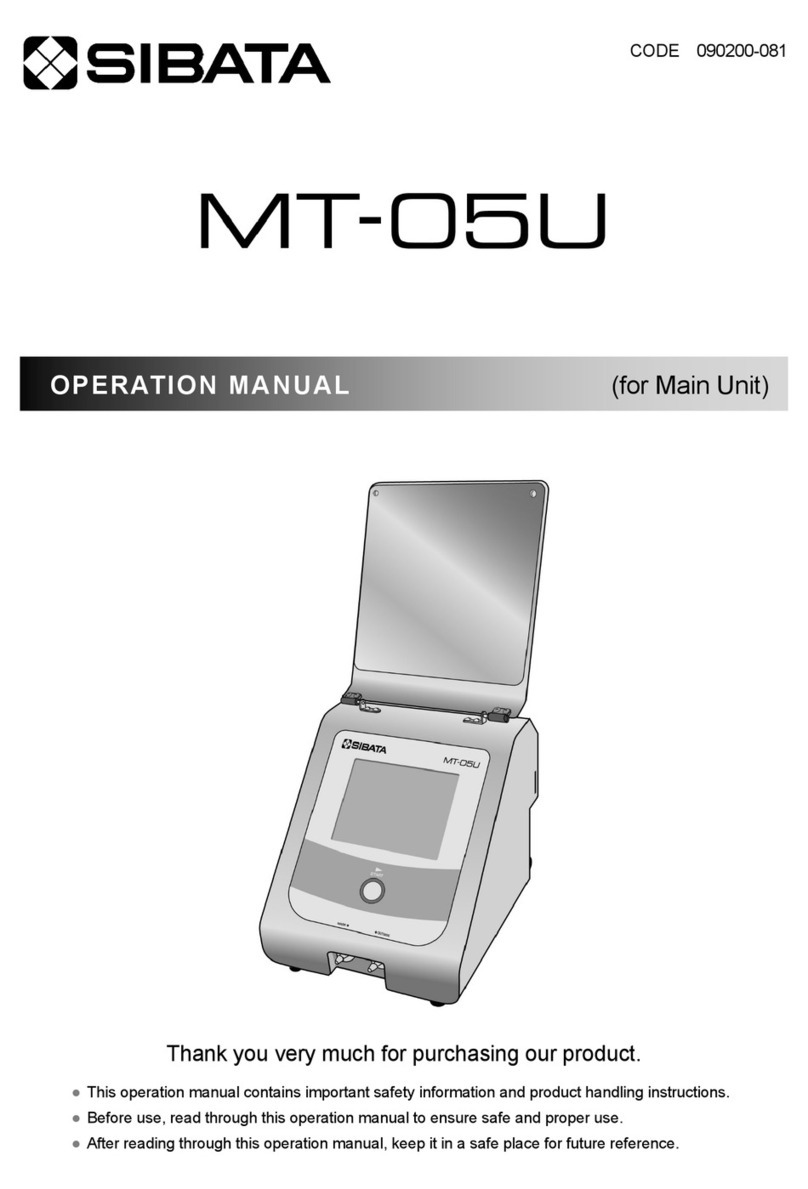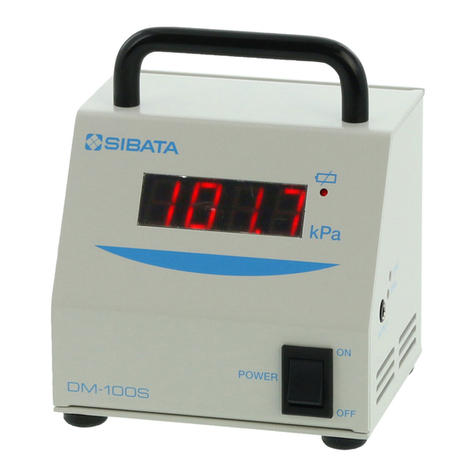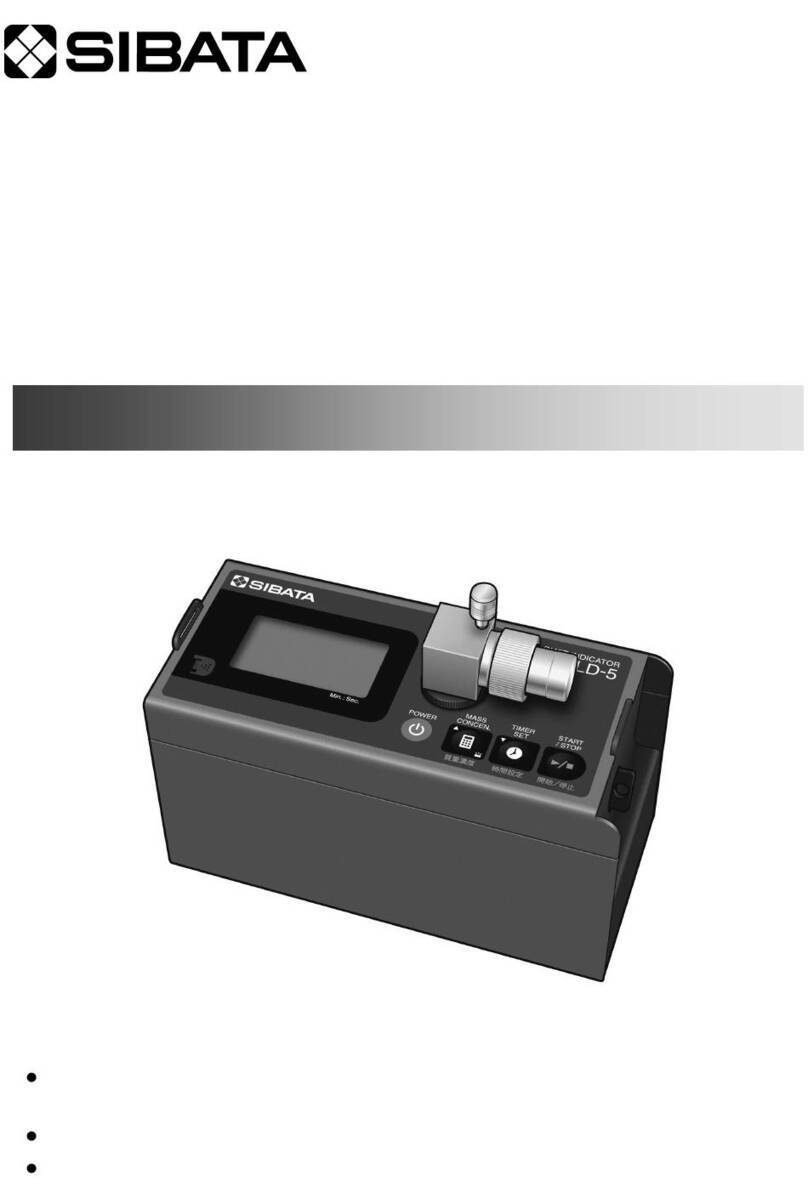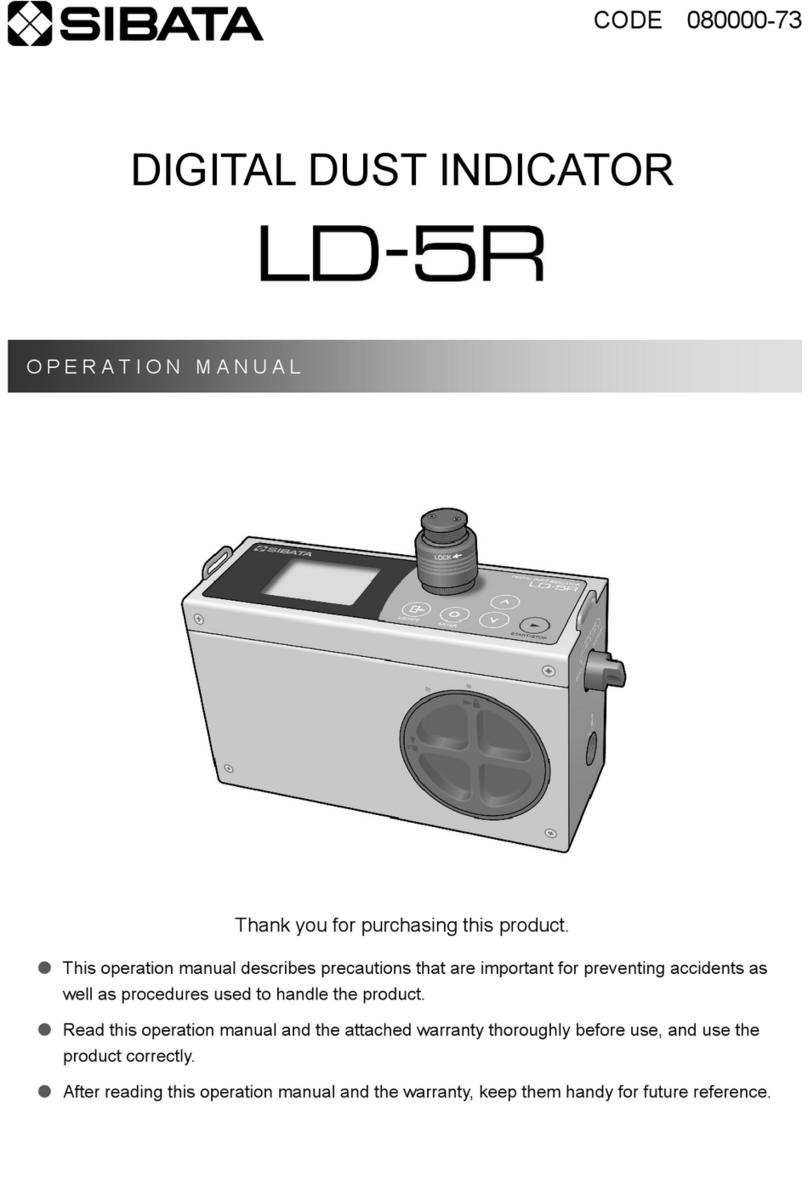
7
CAUTION
If not using the product for an extended period, remove the batteries and store it at a
dry, low temperature location, away from direct sunlight.
Install the product at a level, stable location. Not doing so could cause operational
problems or a malfunction.
Do not place anything on top of the product. Doing so could cause the product falling
down, deformation, malfunction, or accident.
When assembling this product, such as when inserting the batteries, be careful that
your fingers do not get pinched.
This product is an air sampling pump. Do not use it for any purpose not indicated in
this manual. Doing so could cause a malfunction.
Do not permit water, other liquids, or non-atmospheric gases to enter the product.
Doing so could cause a malfunction.
Be sure to operate the product with a filter element and sampling unit installed at the
intake port. Sampling air directly for long periods could cause a malfunction.
Do not permit flammable gases, corrosive gases, or chemicals to enter the product.
Doing so could cause a malfunction or fire.
Do not insert screws or other foreign objects into the intake port or exhaust port. If a
foreign object accidentally enters the product, immediately switch the power OFF.
Then contact your Sibata representative or the vendor where you purchased the
product.
The normal operating temperature range of this product is 0 to 40 °C, with humidity
between 10 and 90 % RH (and no condensation). Operating the product outside these
temperature and humidity ranges could reduce performance, shorten the service life,
or cause a malfunction.
Remove the batteries and disconnect any external batteries before cleaning or
inspecting the product. Not doing so could cause an electric shock, battery leakage, or
other problems.
Keep the product away from sources of noise. Also, do not place it in areas with
strong magnetic fields, high dust levels, or high humidity. Doing so could cause
product damage or other problems.
Important
Please be aware that in the unlikely event of a product failure, Sibata bears no responsibility to
compensate for sampling data not acquired or recorded, and is not responsible for loss of data,
or for other direct or indirect damages incurred from such loss. Be sure to back up* data on a
regular basis in case of an accident or failure.
* This product does not have a data output function. To back up the results, you must write
them down for example.

